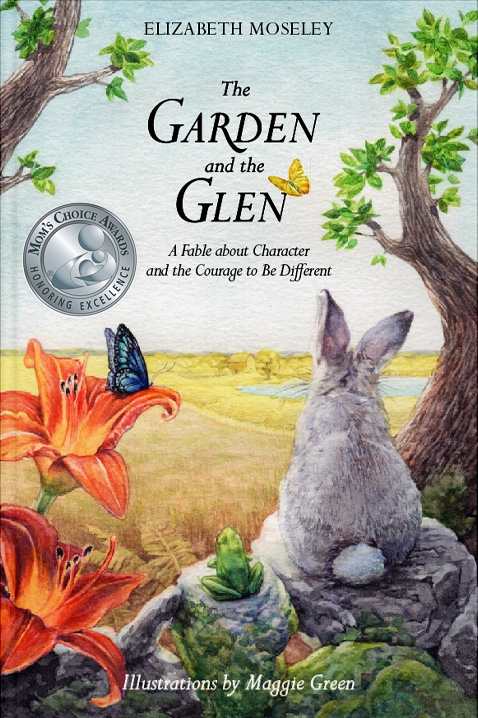The Garden and the Glen
A Fable about Character and the Courage to Be Different
- 2020 INDIES Finalist
- Finalist, Picture Books, Early Reader (Children's)
The Garden and the Glen’s spectacular illustrations bring life to a lovely story about a blue butterfly who saves a queendom.
Extraordinary artwork pairs with a whimsical story about the beauty of diversity in nature in Elizabeth Moseley’s children’s book The Garden and the Glen.
In a garden full of yellow flowers, by a yellow house, a yellow fence, and a yellow tree, a swarm of yellow butterflies chase a blue butterfly away to a nearby glen. Families of deer, rabbits, colorful birds, and flowers welcome the blue butterfly and share their own stories of being kicked out of the garden.
In truth, the yellow butterflies are following the orders of the “boss butterfly,” who took control when the queen butterfly of the garden became sick. The boss butterfly wants everything in the garden to look uniform, and he seeks to prevent the queen from reaching a medicine flower that will cure her so he can be king. When the citizens of the garden suggest that the blue butterfly is the only one who can help the queen, he develops a plan to get rid of both of them for good.
All of the book’s creatures are anthropomorphized, including the flowers, and each character has a distinct personality and is a valuable member of the community. The gray bunny cares about the well-being of his friends, rallying the glen animals to search for the brave blue butterfly when she flies off to save the queen; the wise daylily provides nourishment and shelter for the blue butterfly, sharing her observations of the changes occuring in the glen since the garden’s shift to yellow, inspiring the animals and plants to be grateful and proud of their work as community.
The story conveys complex themes, including about the dangers of conformity and fascism, and about the benefits of diversity, well. Its straightforward plot focuses on the butterflies’ mission and the sense of community the inhabitants of the glen create, so the book’s powerful message of individuality shines through in a natural, graceful way. The story, its characters, and their conversations work in tandem to communicate the multiple layers of the story’s morals, as when the blue butterfly agrees to help the queen navigate her way to the medicine flower: the blue butterfly takes risks to reenter the garden, showing that personal sacrifices are necessary to make change; further, the blue butterfly alone can save the queen, with her bright wings that help lead the queen to the correct yellow flower, showing that diversity is a significant factor in nature.
The uniform yellow garden is rendered in gorgeous and realistic illustrations, though the vibrant colors of the glen are a more stunning representation of nature’s varied beauty. The wings of soaring birds, the delicate petals of lilies, and the forms of deer, squirrels, and frogs come alive in a remarkable dance of light and shadows, dazzling colors, and structured layers, making the flora and fauna seem dimensional and real. Every page features an impressive, immersive illustration on which audiences will linger in awe.
The Garden and the Glen’s spectacular illustrations bring life to a lovely story about a blue butterfly who saves a queendom.
Reviewed by
Aimee Jodoin
Disclosure: This article is not an endorsement, but a review. The publisher of this book provided free copies of the book and paid a small fee to have their book reviewed by a professional reviewer. Foreword Reviews and Clarion Reviews make no guarantee that the publisher will receive a positive review. Foreword Magazine, Inc. is disclosing this in accordance with the Federal Trade Commission’s 16 CFR, Part 255.

